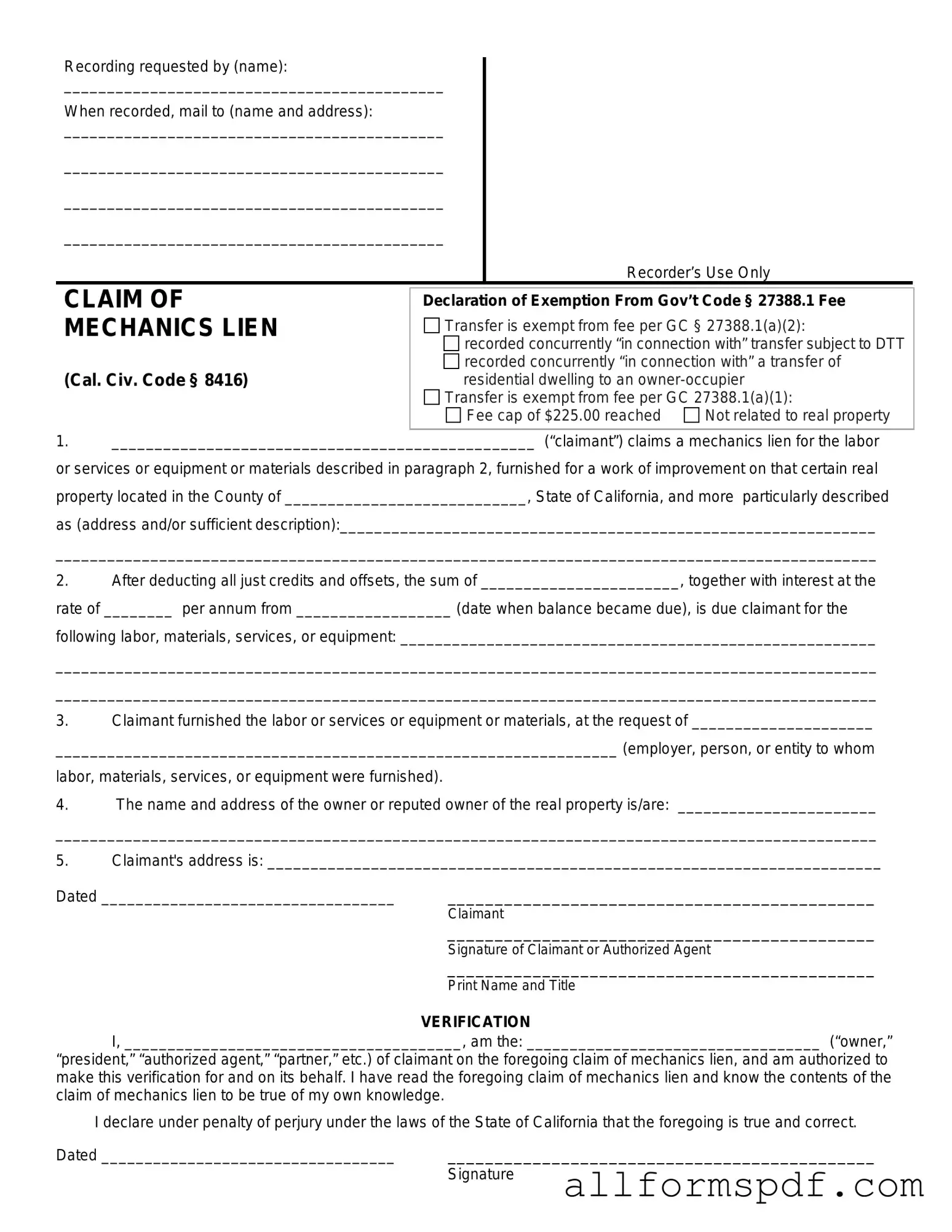Filing a Mechanics Lien in California can be a straightforward process, but many people make common mistakes that can jeopardize their claims. Understanding these pitfalls can save time, money, and frustration. Here are seven mistakes to watch out for when filling out the Mechanics Lien form.
One frequent error is failing to include accurate property information. The form requires specific details about the property, including the address and parcel number. Omitting or misreporting this information can lead to delays or even a dismissal of the lien. Always double-check the property details to ensure they are correct.
Another common mistake is not providing a clear description of the work performed. The Mechanics Lien form asks for a detailed account of the services or materials provided. Vague descriptions can create confusion and weaken your claim. Be as specific as possible to establish the value of your contribution.
People often overlook the importance of timely filing. In California, there are strict deadlines for filing a Mechanics Lien. If you miss the deadline, you may lose your right to claim payment. Keep track of these timelines and make sure to file your lien promptly to protect your interests.
Another mistake is neglecting to sign the document. A Mechanics Lien must be signed by the claimant or their authorized representative. Failing to sign the form renders it invalid. Always ensure that the form is signed before submitting it.
Many individuals also forget to provide proper notice to the property owner. California law requires that the property owner be notified of the lien. Not providing this notice can lead to complications. Make sure to send the required notice to the owner and keep a record of this communication.
Some people assume that one form fits all. Each Mechanics Lien may require different information based on the specific circumstances of the project. Customizing your form to reflect your situation can help avoid confusion and strengthen your claim.
Finally, a significant mistake is not keeping copies of all documents. After filing the Mechanics Lien, it’s essential to keep copies of the submitted form and any related correspondence. These documents serve as proof of your claim and can be invaluable if disputes arise later. Always maintain organized records of your filings.
Avoiding these common mistakes can make a significant difference in the success of your Mechanics Lien claim. Being thorough and attentive to detail will help protect your rights and ensure you receive the payment you deserve.
